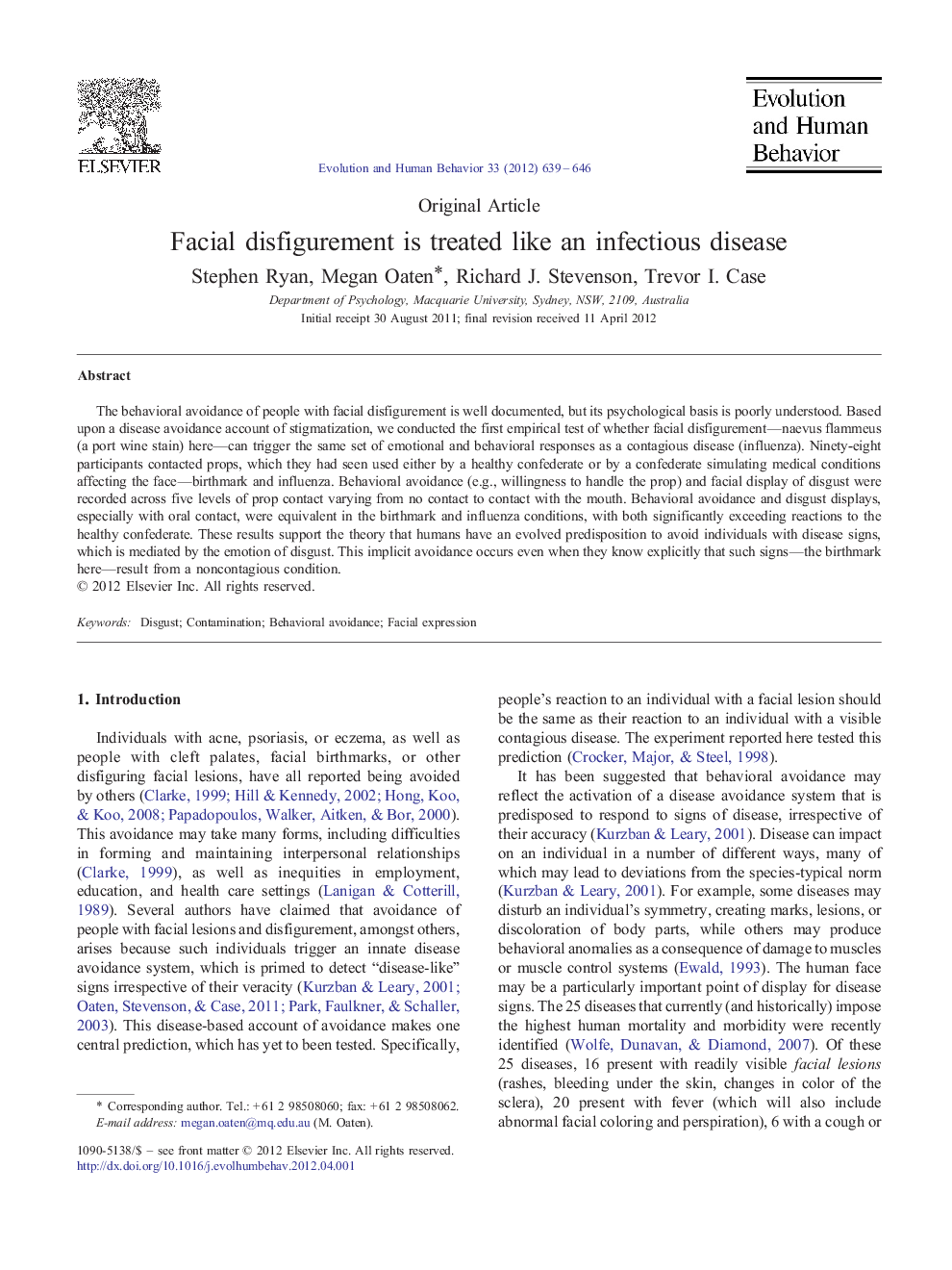| Article ID | Journal | Published Year | Pages | File Type |
|---|---|---|---|---|
| 943169 | Evolution and Human Behavior | 2012 | 8 Pages |
The behavioral avoidance of people with facial disfigurement is well documented, but its psychological basis is poorly understood. Based upon a disease avoidance account of stigmatization, we conducted the first empirical test of whether facial disfigurement—naevus flammeus (a port wine stain) here—can trigger the same set of emotional and behavioral responses as a contagious disease (influenza). Ninety-eight participants contacted props, which they had seen used either by a healthy confederate or by a confederate simulating medical conditions affecting the face—birthmark and influenza. Behavioral avoidance (e.g., willingness to handle the prop) and facial display of disgust were recorded across five levels of prop contact varying from no contact to contact with the mouth. Behavioral avoidance and disgust displays, especially with oral contact, were equivalent in the birthmark and influenza conditions, with both significantly exceeding reactions to the healthy confederate. These results support the theory that humans have an evolved predisposition to avoid individuals with disease signs, which is mediated by the emotion of disgust. This implicit avoidance occurs even when they know explicitly that such signs—the birthmark here—result from a noncontagious condition.
